When your data can't be explained by plain words.
1. Preprocess Keras Model for TensorSpace
 “TensorSpace is a neural network 3D visualization framework. — TensorSpace.org”
“TensorSpace is a neural network 3D visualization framework. — TensorSpace.org”
2. Artificial Intelligence in Healthcare: Major Opportunities and Challenges
 Scientists consider that AI will revolutionize our world exactly the way electricity did a century ago. The integration of AI technology in Medical and Healthcare is a major leap forward. Although Healthcare and Medical AI will add extensively to the development and emergence of swift possibilities, it also faces certain challenges. Dexascan is considered to be one of the leading organizations that faced numerous challenges in healthcare Body Fat, Muscle & Bone Health and tried to overcome them at every possible step.
Scientists consider that AI will revolutionize our world exactly the way electricity did a century ago. The integration of AI technology in Medical and Healthcare is a major leap forward. Although Healthcare and Medical AI will add extensively to the development and emergence of swift possibilities, it also faces certain challenges. Dexascan is considered to be one of the leading organizations that faced numerous challenges in healthcare Body Fat, Muscle & Bone Health and tried to overcome them at every possible step.
3. How To Become A Data Scientist: Skills & Courses To Learn Data Science
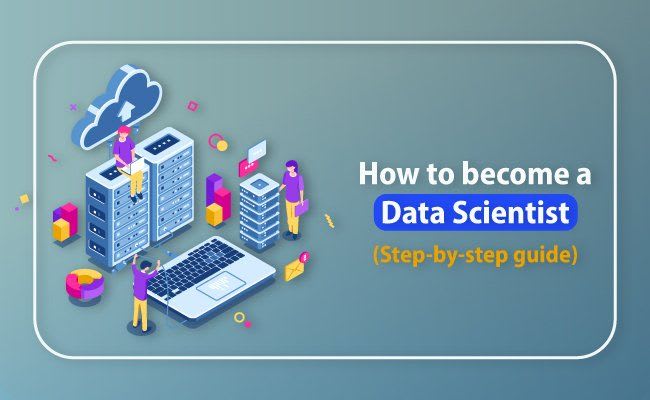 The necessary skills to build a Data Scientist’s profile are business intelligence, statistical knowledge, technical skills, data structure, and more.
The necessary skills to build a Data Scientist’s profile are business intelligence, statistical knowledge, technical skills, data structure, and more.
4. Deep Dive Into Open Source BI Tool Helical Insight
 When Helical Insight first announced a couple of years ago that they were releasing an Open Source Business Intelligence (BI) tool, it really caught my interest and I reached out to founder Nikhilesh Tiwari to find out more about what he was doing. I spent a little time with the product and really liked where it was going and was determined to do more of a deep dive in the future, and with their release of version 3.0, that time is now.
When Helical Insight first announced a couple of years ago that they were releasing an Open Source Business Intelligence (BI) tool, it really caught my interest and I reached out to founder Nikhilesh Tiwari to find out more about what he was doing. I spent a little time with the product and really liked where it was going and was determined to do more of a deep dive in the future, and with their release of version 3.0, that time is now.
5. How (and why) to use D3 with React
 If you’re planning to build a React app with more than a few simple data visualizations, you’ll probably want to pick an approach that:
If you’re planning to build a React app with more than a few simple data visualizations, you’ll probably want to pick an approach that:
6. Top 10 JavaScript Charting Libraries for Every Data Visualization Need
 Nowadays, the amount of data grows exponentially, and the more information we see, the harder it gets to process it. That’s why we need data visualization — in charts and dashboards, preferably interactive. It helps us humans save a lot of time and effort to view, analyze, and understand data, and make the right, informed decisions based on that.
Nowadays, the amount of data grows exponentially, and the more information we see, the harder it gets to process it. That’s why we need data visualization — in charts and dashboards, preferably interactive. It helps us humans save a lot of time and effort to view, analyze, and understand data, and make the right, informed decisions based on that.
7. Integrating Bokeh visualisations into Django Projects.
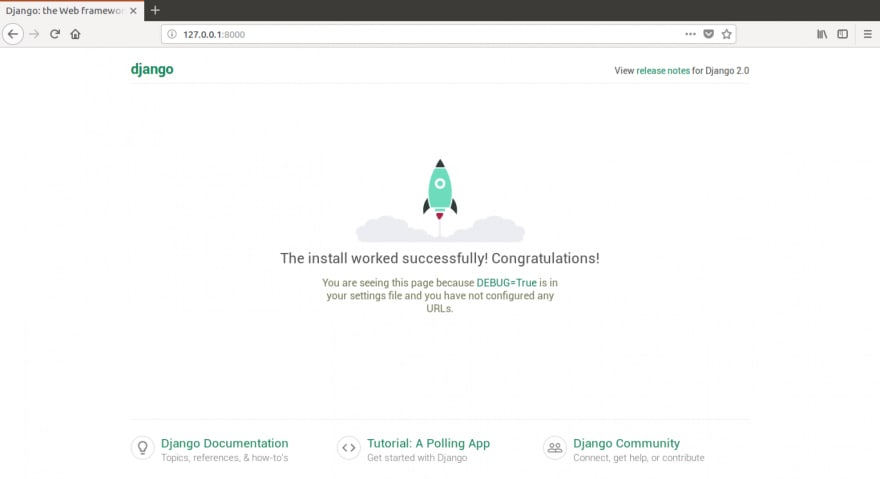 Despite being a python developer for years only recently have I needed to interact with Django. While exploring Django, I decided I wanted to learn a little more about Bokeh the visualisation library. I tried to integrate it into my django project and found it challenging to find a complete tutorial. I thought I would create a post outlining the steps to integrate Bokeh into Django in case anyone finds it useful.
Despite being a python developer for years only recently have I needed to interact with Django. While exploring Django, I decided I wanted to learn a little more about Bokeh the visualisation library. I tried to integrate it into my django project and found it challenging to find a complete tutorial. I thought I would create a post outlining the steps to integrate Bokeh into Django in case anyone finds it useful.
8. Taking Data Visualization to Another Level
 When you tend to use one library for a certain period of time, you get used to it. But, you need to evolve and learn something new every day. If you are still stuck up with Matplotlib(Which is amazing), Seaborn(This is amazing too), Pandas(Basic, yet easy Visualization) and Bokeh, You need to move on and try something new. Many amazing visualization libraries are available in python, which turns to be very versatile. Here, I’m going to discuss about these amazing libraries:
When you tend to use one library for a certain period of time, you get used to it. But, you need to evolve and learn something new every day. If you are still stuck up with Matplotlib(Which is amazing), Seaborn(This is amazing too), Pandas(Basic, yet easy Visualization) and Bokeh, You need to move on and try something new. Many amazing visualization libraries are available in python, which turns to be very versatile. Here, I’m going to discuss about these amazing libraries:
9. How to convert and prepare TopoJSON files for interactive mapping with d3
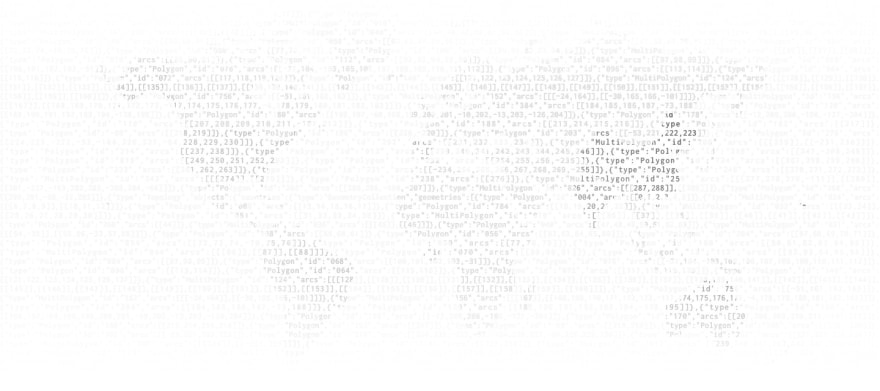 This tutorial will show you how to convert publicly available shapefiles to TopoJSON to create interactive maps with d3/d3-geo. I will show you how to do this without the use of the command line so you can get into experimenting with d3 as fast as possible. If you are interested in working with shapefiles and TopoJSON in a more advanced fashion, I suggest you take a look at Mike Bostock’s recent multipart tutorials on command-line cartography.
This tutorial will show you how to convert publicly available shapefiles to TopoJSON to create interactive maps with d3/d3-geo. I will show you how to do this without the use of the command line so you can get into experimenting with d3 as fast as possible. If you are interested in working with shapefiles and TopoJSON in a more advanced fashion, I suggest you take a look at Mike Bostock’s recent multipart tutorials on command-line cartography.
10. Unsupervised learning demystified
 Unsupervised learning may sound like a fancy way to say “let the kids learn on their own not to touch the hot oven” but it’s actually a pattern-finding technique for mining inspiration from your data. It has nothing to do with machines running around without adult supervision, forming their own opinions about things. Let’s demystify!
Unsupervised learning may sound like a fancy way to say “let the kids learn on their own not to touch the hot oven” but it’s actually a pattern-finding technique for mining inspiration from your data. It has nothing to do with machines running around without adult supervision, forming their own opinions about things. Let’s demystify!
11. Visualizing Uber and Lyft usage in San Francisco: more than 200,000 trips a day.
 Newly-available data, visualized!
Newly-available data, visualized!
12. A Machine Learning Approach to IBM Employee Attrition and Performance
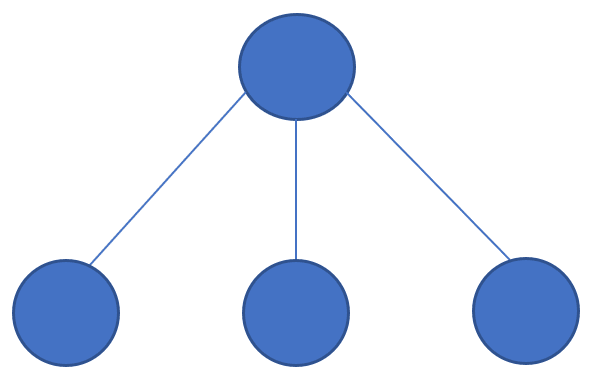 In an IT firm, there are many Employee Architectures available. Some IT firms or at particular departments or certain levels follow the chief programmer structure, in which there is a “star” organisation around a “chief” position designated to the Engineer who best understands the system requirements.
In an IT firm, there are many Employee Architectures available. Some IT firms or at particular departments or certain levels follow the chief programmer structure, in which there is a “star” organisation around a “chief” position designated to the Engineer who best understands the system requirements.
13. Server-rendered charts in Django
 Say, you’re building a Django-powered web application and you have some data you want to visualize. How do you do it? The most popular option is to pick a front-end charting library, have the back-end send the dataset (either through an API or directly passing it to the template) to the front-end, and render the chart in the browser. This approach allows the front-end to do most of the heavy lifting, thereby reducing the strain on your server.
Say, you’re building a Django-powered web application and you have some data you want to visualize. How do you do it? The most popular option is to pick a front-end charting library, have the back-end send the dataset (either through an API or directly passing it to the template) to the front-end, and render the chart in the browser. This approach allows the front-end to do most of the heavy lifting, thereby reducing the strain on your server.
14. R and Javascript : Execution, Libraries, Integration
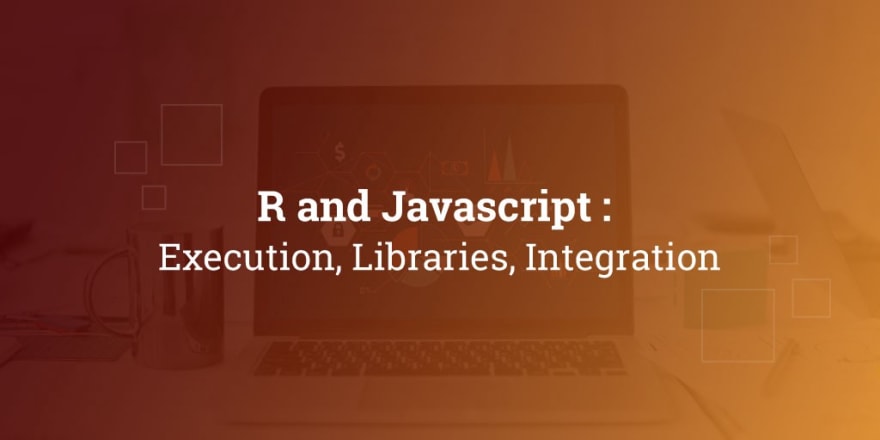 In today’s date, R is the megastar language for big data analytics. In this article, I will talk about on coordination, visualization and execution of R and JavaScript. However, you may ask the question for what reason somebody might want to incorporate R into web applications?
In today’s date, R is the megastar language for big data analytics. In this article, I will talk about on coordination, visualization and execution of R and JavaScript. However, you may ask the question for what reason somebody might want to incorporate R into web applications?
15. d3.js and Google Maps API in 11 easy steps
 A recent challenge was to link data with longitude and latitude coordinates which I’d used when developing a training compliance dashboard. Here’s the final visualisation.
A recent challenge was to link data with longitude and latitude coordinates which I’d used when developing a training compliance dashboard. Here’s the final visualisation.
16. JavaScript Visualization Frameworks Review
 Data has gradually become a very important aspect tool in the world today.
Data has gradually become a very important aspect tool in the world today.
17. How to Create Cool Interactive Sankey Diagrams Using JavaScript
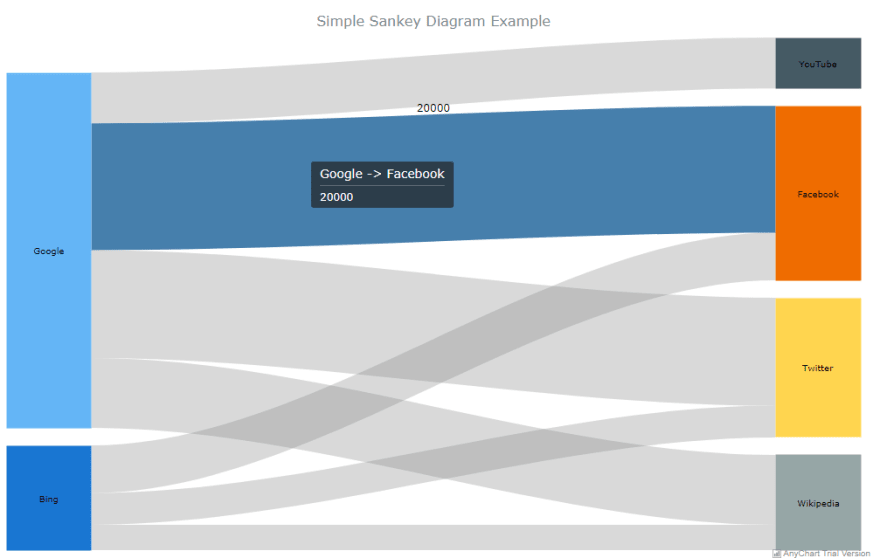
18. Logistic Regression in Python from scratch
 Classification is a very common and important variant among Machine Learning Problems. Many Machine Algorithms have been framed to tackle classification (discrete not continuous) problems. Examples of classification based predictive analytics problems are:
Classification is a very common and important variant among Machine Learning Problems. Many Machine Algorithms have been framed to tackle classification (discrete not continuous) problems. Examples of classification based predictive analytics problems are:
19. Silent Augmented Reality
 (This is part 2. Read part 1 on augmented reality visualizations here.)
(This is part 2. Read part 1 on augmented reality visualizations here.)
20. Learning Data Analytics is not tough, Starting is Tough!
 People often ask me “How can I learn Data Analytics?” and I often stumble upon this question ‘How to become a Data Analyst” on Quora too. The answer is pretty much clearly available all over the internet. The actual issue is not how to become a data analyst but it is if we are ready to become one?
People often ask me “How can I learn Data Analytics?” and I often stumble upon this question ‘How to become a Data Analyst” on Quora too. The answer is pretty much clearly available all over the internet. The actual issue is not how to become a data analyst but it is if we are ready to become one?
21. Creating Brand Personas with Machine Learning
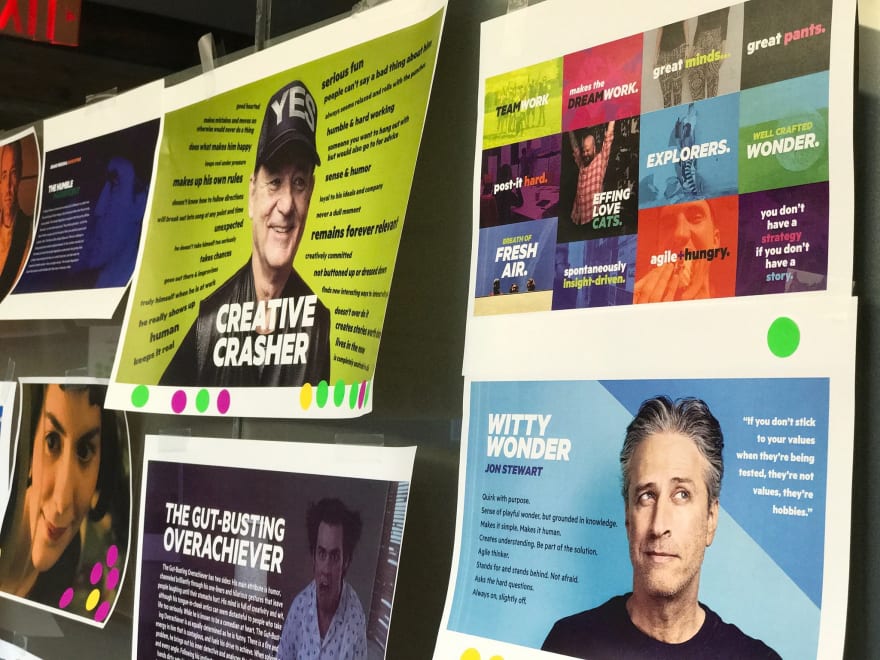 As a developer, I don’t usually sit in on our brand strategy meetings, but seeing as this particular meeting was about 20nine’s brand, I was able to get a taste of how they work. One of our assignments was to come up with a character (real or fictitious) that best represented the personality of the company.
As a developer, I don’t usually sit in on our brand strategy meetings, but seeing as this particular meeting was about 20nine’s brand, I was able to get a taste of how they work. One of our assignments was to come up with a character (real or fictitious) that best represented the personality of the company.
22. Tableau: Pareto Chart (20,80) — Top Products, Customers, …
 By the definition: A Pareto chart, is a type of chart that contains both bars and a line graph, where individual values are represented in descending order by bars, and the cumulative total is represented by the line.
By the definition: A Pareto chart, is a type of chart that contains both bars and a line graph, where individual values are represented in descending order by bars, and the cumulative total is represented by the line.
23. Mapping Tutorial: Combining Victory Charts and React-Simple-Maps
 React-simple-maps is a react component library to help make SVG mapping with d3-geo, TopoJSON, and React easier. One of the strengths of using
React-simple-maps is a react component library to help make SVG mapping with d3-geo, TopoJSON, and React easier. One of the strengths of using react-simple-maps is that it gives React full control over the DOM and does not treat the SVG map as a black box. This means that react-simple-maps can easily take advantage of the entire React ecosystem and all the good things that come with it.
24. Making sense of real-world data: ROC curves, and when to use them
 Welcome to another edition in our series on data and model visualization!
Welcome to another edition in our series on data and model visualization!
25. Python Pandas — Basics to Beyond

26. Creating visualizations to better understand your data and models (Part 1)
 One of my favorite things about being a data scientist is creating new tools that make it easier to interpret data and models. I especially like to think about new ways to visualize data that could help solve a tough problem and be useful to my team. Visualizations and interactive interfaces tend to elevate how we work, and short-term investment in new tooling accelerate our analyses and enhance our understanding of the data.
One of my favorite things about being a data scientist is creating new tools that make it easier to interpret data and models. I especially like to think about new ways to visualize data that could help solve a tough problem and be useful to my team. Visualizations and interactive interfaces tend to elevate how we work, and short-term investment in new tooling accelerate our analyses and enhance our understanding of the data.
27. Visualizing data in JavaScript with D3.js and dimple
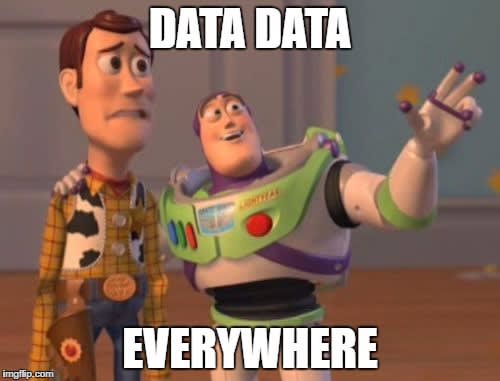 Okay, so here’s another article about data visualization(also my first article on Medium). Well, its kind of because its such an important topic(and also because I have nothing else to write about :p )
Okay, so here’s another article about data visualization(also my first article on Medium). Well, its kind of because its such an important topic(and also because I have nothing else to write about :p )
28. The Best Data Visualizations for Grabbing Readers’ Attention
 Data visualization is the creation and study of the visual representation of data in a visual context, like a chart or a map. It helps understand the significance of that data.
Data visualization is the creation and study of the visual representation of data in a visual context, like a chart or a map. It helps understand the significance of that data.
29. Designing a Website for Data
 It’s complex to create the right design when the only visuals you have are based on data. Here’s how we did it.
It’s complex to create the right design when the only visuals you have are based on data. Here’s how we did it.
30. Serious about big data visualization? Consider using MapD.
 Last summer MapD open-sourced their technology and made it available for everybody. At that moment me and my colleagues at Dimebox where working on a POV for a potential big client which we had to impress. Our data analytics capabilities where already advanced, but couldn’t handle a lot of data due to the fact it worked client side. We decided to hop on the MapD-train and the results thus far are pretty amazing.
Last summer MapD open-sourced their technology and made it available for everybody. At that moment me and my colleagues at Dimebox where working on a POV for a potential big client which we had to impress. Our data analytics capabilities where already advanced, but couldn’t handle a lot of data due to the fact it worked client side. We decided to hop on the MapD-train and the results thus far are pretty amazing.
31. Creating visualizations to better understand your data and models (Part 2)
 This is Part 2 of a three-part series about creating visualizations for dissecting data and models. Part 1 can be found here and code, including a Jupyter Notebook with the visualizations in this post, is on GitHub.
This is Part 2 of a three-part series about creating visualizations for dissecting data and models. Part 1 can be found here and code, including a Jupyter Notebook with the visualizations in this post, is on GitHub.
32. MongoDB: Exploring Data Visualization Tools and Techniques
 Looking for MongoDB data visualization tool? There are plenty of options but firstly its better to explore what kinds of solutions there are on the market.
Looking for MongoDB data visualization tool? There are plenty of options but firstly its better to explore what kinds of solutions there are on the market.
33. An Internal Email to Tim Cook and the State of Business Intelligence
 We get a glimpse into the inner workings of a valuable company and it turns out it's not all sunshine and rainbows.
We get a glimpse into the inner workings of a valuable company and it turns out it's not all sunshine and rainbows.
34. Small Team, Big Success. Part 1: amCharts is Building the Future of Data Visualization on the Web
 For the last 5 years I’ve been dreaming about starting a podcast where I would interview indie developers who made it big and still decided to stay small and frugal rather than shoot for some imaginary stars just because our society considers it to be the “right” way. Why after creating a successful “indie” product developers would decide to prioritize freedom and happiness over a chance to manage thousands of people is a question I can relate to and like to explore.
For the last 5 years I’ve been dreaming about starting a podcast where I would interview indie developers who made it big and still decided to stay small and frugal rather than shoot for some imaginary stars just because our society considers it to be the “right” way. Why after creating a successful “indie” product developers would decide to prioritize freedom and happiness over a chance to manage thousands of people is a question I can relate to and like to explore.
35. Data is Beautiful
 Joe Hellerstein, a computer scientist at the University of California in Berkeley, calls it “the industrial revolution of data”. Data is everywhere. And it is beautiful.
Joe Hellerstein, a computer scientist at the University of California in Berkeley, calls it “the industrial revolution of data”. Data is everywhere. And it is beautiful.
36. Washington, D.C. gives no fucks
 It’s summer in our nation’s capital. The humidity and the political climate are unbearably oppressive, and the denizens of D.C. do not give a fuck — at least, not literally. How do we know? I, along with fellow data scientist Rebecca Meseroll, collected over 10.7 million tweets from the contiguous 48 states and found out that ‘fuck’ appears in approximately 21 out of every 1000 tweets. In other words, slightly over 2% of all American tweets contain at least one variant of the word ‘fuck.’ Our analysis reveals a dearth of fucks in the District relative to the rest of the nation; the local fuck frequency in D.C. is a scant 11.7 per 1000 tweets. Language in other locales is not so chaste, however. Wyomingites, Californians, and Nevadans liberally peppered their tweets with profanity, exceeding 25 fuck-containing tweets per 1000 — more than twice their D.C. counterparts.
It’s summer in our nation’s capital. The humidity and the political climate are unbearably oppressive, and the denizens of D.C. do not give a fuck — at least, not literally. How do we know? I, along with fellow data scientist Rebecca Meseroll, collected over 10.7 million tweets from the contiguous 48 states and found out that ‘fuck’ appears in approximately 21 out of every 1000 tweets. In other words, slightly over 2% of all American tweets contain at least one variant of the word ‘fuck.’ Our analysis reveals a dearth of fucks in the District relative to the rest of the nation; the local fuck frequency in D.C. is a scant 11.7 per 1000 tweets. Language in other locales is not so chaste, however. Wyomingites, Californians, and Nevadans liberally peppered their tweets with profanity, exceeding 25 fuck-containing tweets per 1000 — more than twice their D.C. counterparts.
37. Uni-Variate, Polynomial and Multi-Variate Regression using OLS/Normal Equation Approach (A-Z)
 As I mentioned in my previous article:
As I mentioned in my previous article:
38. The Simplest Way to do Exploratory Data Analysis(EDA) using Python Code
 EDA for Data Analysis or Data Visualization is very important. It gives a brief summary and main characteristics of data. According to a survey, Data Scientist uses their most of time to perform EDA tasks.
EDA for Data Analysis or Data Visualization is very important. It gives a brief summary and main characteristics of data. According to a survey, Data Scientist uses their most of time to perform EDA tasks.
39. Anscombe’s Quartet And Importance of Data Visualization
 Anscombe’s quartet comprises four data sets that have nearly identical simple descriptive statistics, yet have very different distributions and appear very different when graphed.
Anscombe’s quartet comprises four data sets that have nearly identical simple descriptive statistics, yet have very different distributions and appear very different when graphed.
— Wikipedia
40. Data Visualization Using Chart.js and Gatsby
 Data visualization helps you transform your unorganized data in an organized and valuable way that conveys the right message to your audience without words.
Data visualization helps you transform your unorganized data in an organized and valuable way that conveys the right message to your audience without words.
41. 2019 Will Be The Year of Data Storytelling
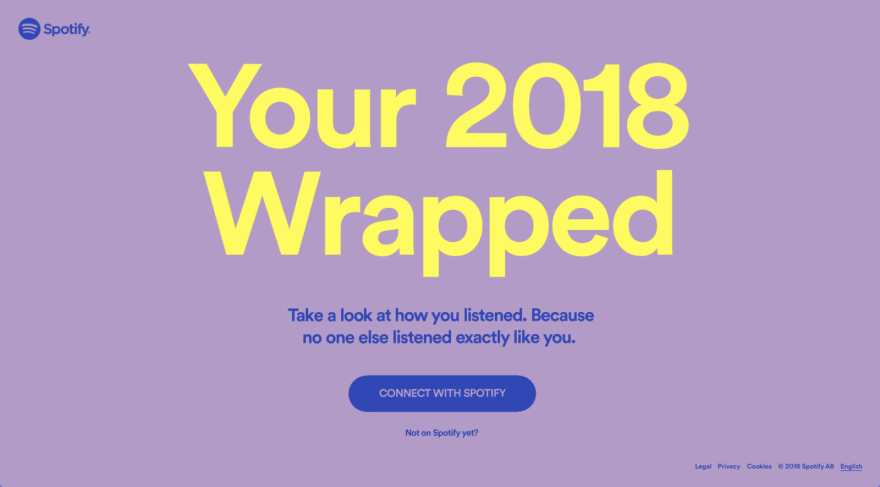 If 2018 was the year of Big Data, then 2019 is going to be the year of using that data to tell a meaningful story.
If 2018 was the year of Big Data, then 2019 is going to be the year of using that data to tell a meaningful story.
42. Visualizing State Drug Utilization Data Sets
 This is important prior to using any ML predictive models, in order to ensure meaningful and actionable outcomes.
This is important prior to using any ML predictive models, in order to ensure meaningful and actionable outcomes.
43. How to Make Beautiful, Easy-to-read Charts with React Native Gifted Charts
 The most complete library for Bar, Line, Area, Pie, and Donut charts in React Native. Allows 2D, 3D, gradient, animations and live data updates.
The most complete library for Bar, Line, Area, Pie, and Donut charts in React Native. Allows 2D, 3D, gradient, animations and live data updates.
44. Data visualizations for text: How to show the process of writing
 Scroll to the bottom of this story for a link to the original post (with interactive demo).
Scroll to the bottom of this story for a link to the original post (with interactive demo).
45. Data Analysis with Python and Pandas
 Learn Python for data analysis and visualization by analyzing large datasets and covering Python 3, Pandas, and Seaborn.
Learn Python for data analysis and visualization by analyzing large datasets and covering Python 3, Pandas, and Seaborn.
46. 10 Data Table Libraries for JavaScript
 Tables are a useful tool for visualizing, organizing and processing data in JavaScript. To start using them, you need to download a free library or one for a reasonable price. Here is a list of 10 useful, functional, and reliable JS libraries that will help you work with tables.
Tables are a useful tool for visualizing, organizing and processing data in JavaScript. To start using them, you need to download a free library or one for a reasonable price. Here is a list of 10 useful, functional, and reliable JS libraries that will help you work with tables.
47. Python/Flask Data Visualization & Interactive Maps
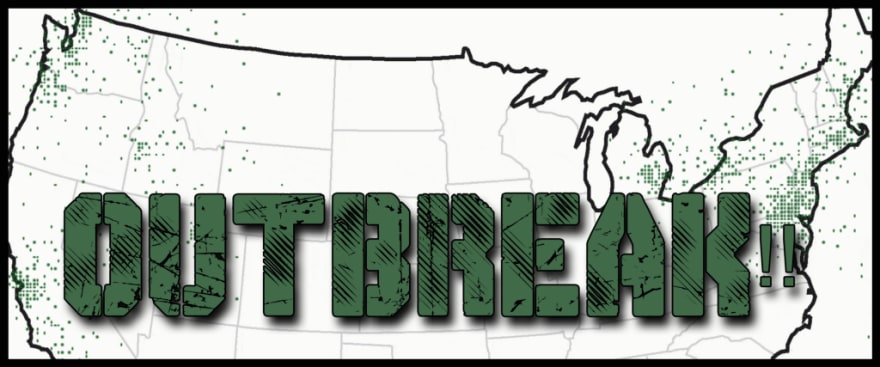 Have you ever wanted to create an interactive data visualization map? In my most recent side project, I created a pretty cool visualization for how a virus might spread across the United States. If you want to check out the finished site, you can click here:
Have you ever wanted to create an interactive data visualization map? In my most recent side project, I created a pretty cool visualization for how a virus might spread across the United States. If you want to check out the finished site, you can click here:
48. Assessing Your Organization's Customer Data Maturity
 Investing in customer data is a top priority for marketing leaders.
Investing in customer data is a top priority for marketing leaders.
49. What Is Data Visualization? Definition, History, and Examples
 Data visualization is the practice of converting data from raw figures into a graphical representation such as graphs, maps, charts, and complex dashboards. Let’s see what makes it important (meaning), how it has developed (history), and exactly how it can work in real life (examples). Join us on Data Visualization 101, an introduction to dataviz and its power.
Data visualization is the practice of converting data from raw figures into a graphical representation such as graphs, maps, charts, and complex dashboards. Let’s see what makes it important (meaning), how it has developed (history), and exactly how it can work in real life (examples). Join us on Data Visualization 101, an introduction to dataviz and its power.
50. Building A Machine Learning Model With PySpark [A Step-by-Step Guide]
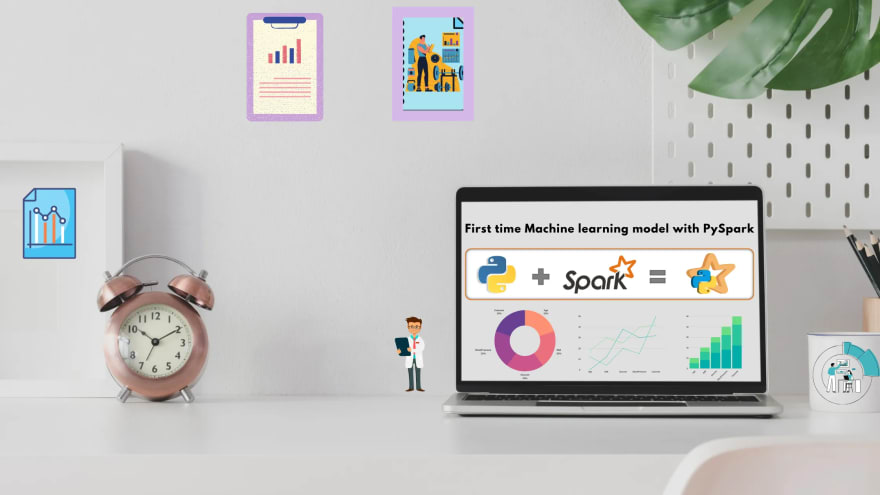 Spark is the name of the engine to realize cluster computing while PySpark is the Python's library to use Spark.
Spark is the name of the engine to realize cluster computing while PySpark is the Python's library to use Spark.
51. Can Augmented Reality solve Mobile Visualization?
 (This is part 1. Read part 2 on creating silent augmented reality here.)
(This is part 1. Read part 2 on creating silent augmented reality here.)
52. 10 Best React Native Chart Libraries
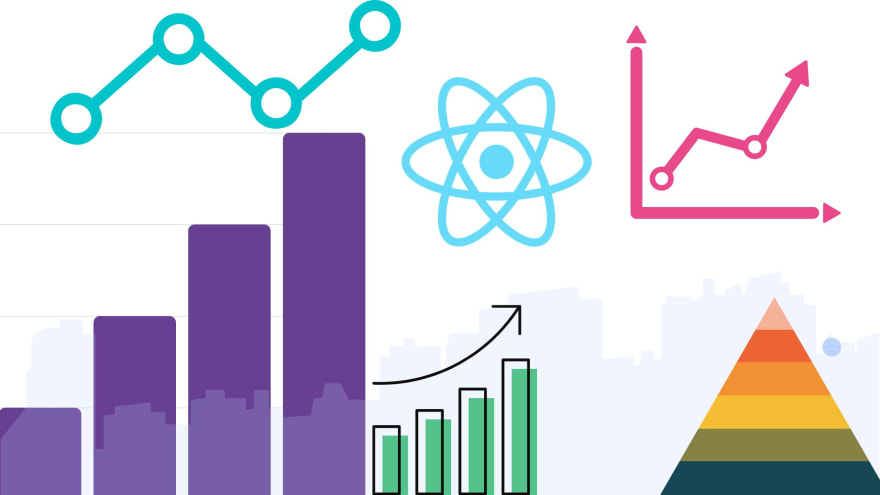 Representing statistical data in plain text or paragraphs, tables are pretty boring in my opinion. What about you?
Representing statistical data in plain text or paragraphs, tables are pretty boring in my opinion. What about you?
53. D3.js: the Perfect Dynamic Platform to Build Amazing Data Visualizations
 Data visualization is a term used to describe the data that comes in a pictorial or graphical format and aids the decision makers to identify a pattern on the amount of information that comes in.
Data visualization is a term used to describe the data that comes in a pictorial or graphical format and aids the decision makers to identify a pattern on the amount of information that comes in.
54. Using Machine Learning to Visualize Customer Preferences
 In 2012, I saw the most amazing visualization in the New York Times. It was created by one of my favorite engineers, Mike Bostock, and his team of data visualization specialists to give readers a deeper look into the most polarizing issues of Obama’s reelection campaign.
In 2012, I saw the most amazing visualization in the New York Times. It was created by one of my favorite engineers, Mike Bostock, and his team of data visualization specialists to give readers a deeper look into the most polarizing issues of Obama’s reelection campaign.
55. 6 Ways Virtual Reality will Transform Big Data Visualizations
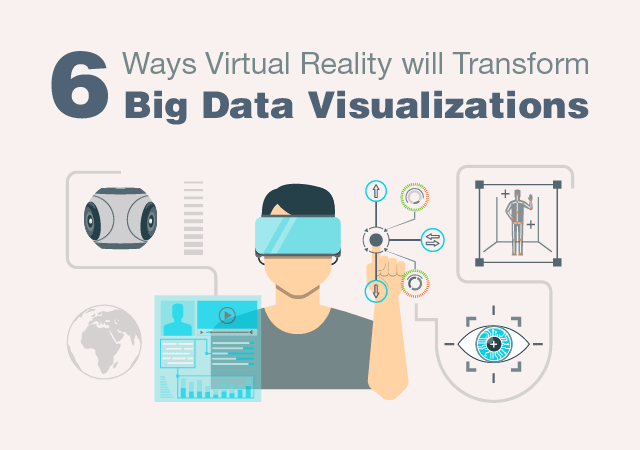 Big data, when procured in its raw form, is a little unwieldy to handle, as it could get unorganized and extremely complicated. Understanding a pattern from the incoming data is a challenge.
Big data, when procured in its raw form, is a little unwieldy to handle, as it could get unorganized and extremely complicated. Understanding a pattern from the incoming data is a challenge.
56. How To Blend Data in Google Data Studio For Better Data Analysis
 Google Data Studio helps us understand the meaning behind data, enabling us to build beautiful visualizations and dashboards that transform data into stories.
Google Data Studio helps us understand the meaning behind data, enabling us to build beautiful visualizations and dashboards that transform data into stories.
57. What it Means to be a Creative Coder
 Programmers rarely agree on whether or not coding is a creative profession. My interest in coding always stemmed from what I could create with the code. Seeing an interesting visual result from my efforts is usually the most satisfying part. Most programmers are less concerned with how their app looks and more concerned with the functionality. Usually, as long as the app works the way it is supposed to, most programmers are satisfied.
Programmers rarely agree on whether or not coding is a creative profession. My interest in coding always stemmed from what I could create with the code. Seeing an interesting visual result from my efforts is usually the most satisfying part. Most programmers are less concerned with how their app looks and more concerned with the functionality. Usually, as long as the app works the way it is supposed to, most programmers are satisfied.
58. Building dashboards is cowardly
 Blindly building yet another dashboard is an act of cowardice. In today’s application world, dashboards alone don’t rise to the challenge of solving people’s real problems.
Blindly building yet another dashboard is an act of cowardice. In today’s application world, dashboards alone don’t rise to the challenge of solving people’s real problems.
59. Creating Composite Node of a Graph using D3.js
 Lately I have been using D3 for visualizing data for a React project and it got my attention for a while. I was especially interested as to the scope of this very powerful tool that has a great problem solving ability range related to any kind of data visualization.
Lately I have been using D3 for visualizing data for a React project and it got my attention for a while. I was especially interested as to the scope of this very powerful tool that has a great problem solving ability range related to any kind of data visualization.
60. An Insight into Agile Analytics
 Agile Analytics is structured on a set of guiding principles and core values. It is not a robust or prescriptive methodology; while it is a way of constructing data marts, data warehouse, analytics applications, and BI applications that aim at primary and consistent productivity of business value all through the development life-cycle. Practically, agile analytics has a set of highly disciplined techniques and practices, a few of which are tailored to enhance the unique (DW/BI) project needs found in your organization.
Agile Analytics is structured on a set of guiding principles and core values. It is not a robust or prescriptive methodology; while it is a way of constructing data marts, data warehouse, analytics applications, and BI applications that aim at primary and consistent productivity of business value all through the development life-cycle. Practically, agile analytics has a set of highly disciplined techniques and practices, a few of which are tailored to enhance the unique (DW/BI) project needs found in your organization.
61. Google Analytics Heartbeat Data Visualization
 An experiment in real-time data visualization
An experiment in real-time data visualization
62. How to Build a Bar Chart Race on COVID-19 Cases in 5 Minutes
 Using the new Tableau version 2020.1 onwards.
Using the new Tableau version 2020.1 onwards.
63. Why visualizations in Health don’t work
 Visualizations in the most favorite health apps don’t have enough comparing and exploring possibilities.
Visualizations in the most favorite health apps don’t have enough comparing and exploring possibilities.
64. How to Use Data Science to Find the Best Seat in the Cinema (Part I)

65. What’s the Point of Being An Entrepreneur?
 A few weeks ago I was asked to give a talk at one of the most distinguished elite technological units in the Israeli Defense Forces. The goal was to expose them to product development and entrepreneurship in the startup world. I thought it through and decided to try and visualize my experience through dimensional thinking and data points which to depict the entrepreneurial experience. I used scientific language and data visualization to tell my story as an entrepreneur.
A few weeks ago I was asked to give a talk at one of the most distinguished elite technological units in the Israeli Defense Forces. The goal was to expose them to product development and entrepreneurship in the startup world. I thought it through and decided to try and visualize my experience through dimensional thinking and data points which to depict the entrepreneurial experience. I used scientific language and data visualization to tell my story as an entrepreneur.
66. 9 Best JavaScript Charting Libraries
 For you to be reading this, it surely would be no news that data visualization has become a very critical part of the IT world today. The huge amount of data being generated by different web technologies need to be properly refined and visualized for the world to use and gain insights from.
For you to be reading this, it surely would be no news that data visualization has become a very critical part of the IT world today. The huge amount of data being generated by different web technologies need to be properly refined and visualized for the world to use and gain insights from.
67. The Top 16 Types of Charts in Data Visualization That You'll Use
 In the era of information explosion, more and more data piles up. However, these dense data are unfocused and less readable. So we need data visualization to help data to be easily understood and accepted. By contrast, visualization is more intuitive and meaningful, and it is very important to use appropriate charts to visualize data.
In the era of information explosion, more and more data piles up. However, these dense data are unfocused and less readable. So we need data visualization to help data to be easily understood and accepted. By contrast, visualization is more intuitive and meaningful, and it is very important to use appropriate charts to visualize data.
68. Pornhub Growth Hack During Coronavirus Pandemic
 The 2019–20 coronavirus pandemic is an ongoing pandemic of coronavirus disease 2019 (COVID-19), caused by severe acute respiratory syndrome coronavirus 2 (SARS-CoV-2). The outbreak was first identified in Wuhan, Hubei, China, in December 2019, and was recognized as a pandemic by the World Health Organization (WHO) on 11 March 2020.
The 2019–20 coronavirus pandemic is an ongoing pandemic of coronavirus disease 2019 (COVID-19), caused by severe acute respiratory syndrome coronavirus 2 (SARS-CoV-2). The outbreak was first identified in Wuhan, Hubei, China, in December 2019, and was recognized as a pandemic by the World Health Organization (WHO) on 11 March 2020.
69. Predicting the likelihood of a customer to make repeat purchases using logistic regression
 For a business getting a customer is exciting, not only because it helps you ‘secure the bag’ by bringing in much needed revenue, but it also creates an opportunity to create loyalty with this new found customer which in turn could help you ‘secure more bags’ through repeat purchases.
For a business getting a customer is exciting, not only because it helps you ‘secure the bag’ by bringing in much needed revenue, but it also creates an opportunity to create loyalty with this new found customer which in turn could help you ‘secure more bags’ through repeat purchases.
70. How to Visualize Bias and Variance
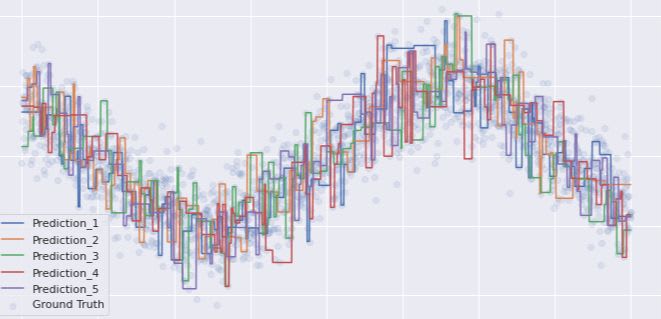 In the process of building a Machine Learning model, there is a trade-off between bias and variance.
In the process of building a Machine Learning model, there is a trade-off between bias and variance.
71. TOP 100 medium writers that wrote about Big Data, Data Science, Data Visualization
 Latest article : TOP 150 medium articles related with Big Data / Data Science / Data Visualization
Latest article : TOP 150 medium articles related with Big Data / Data Science / Data Visualization
72. Creating an Interactive Word Tree Chart with JavaScript
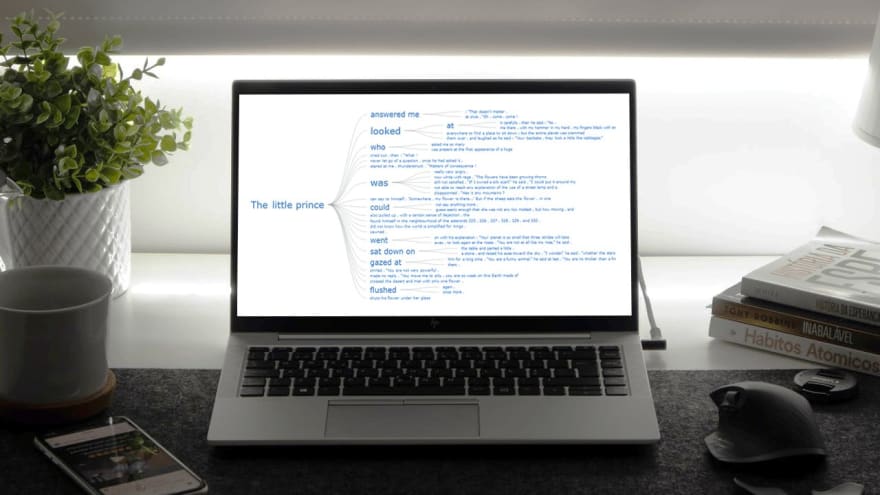 Learn how to create beautiful interactive JavaScript Word Trees and check out an awesome Word Tree chart visualizing the text of The Little Prince.
Learn how to create beautiful interactive JavaScript Word Trees and check out an awesome Word Tree chart visualizing the text of The Little Prince.
73. How I Analyzed One Million Voter Records in Manhattan
 What if you could instantly visualize the political affiliation of an entire city, down to every single apartment and human registered to vote? Somewhat surprisingly, the City of New York made this a reality in early 2019, when the NYC Board of Elections decided to release 4.6 million voter records online, as reported by the New York Times. These records included full name, home address, political affiliation, and whether you have registered in the past 2 years. The reason according to this article was:
What if you could instantly visualize the political affiliation of an entire city, down to every single apartment and human registered to vote? Somewhat surprisingly, the City of New York made this a reality in early 2019, when the NYC Board of Elections decided to release 4.6 million voter records online, as reported by the New York Times. These records included full name, home address, political affiliation, and whether you have registered in the past 2 years. The reason according to this article was:
74. How to Use Different Data Visualizations in the Grafana Dashboard
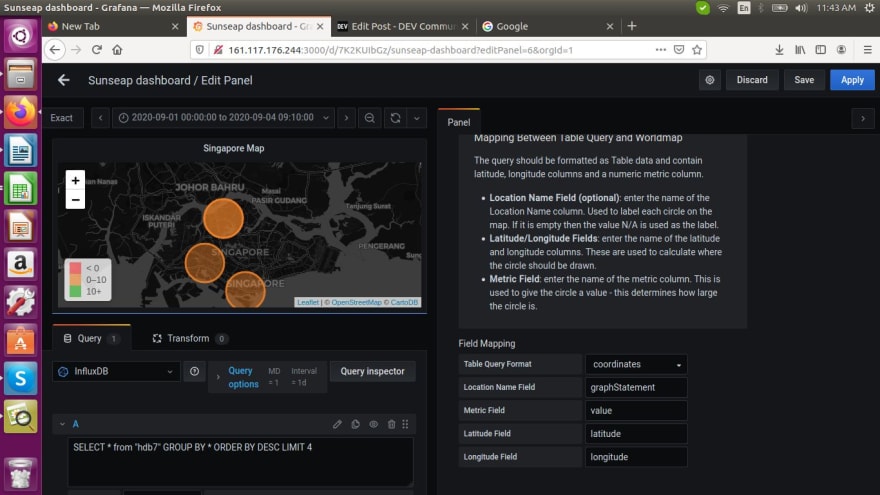 In this post, we will see how to use different visualizations, like the simple graph, pie chart, world map panel in the grafana dashboard by writing queries in Influx query language
In this post, we will see how to use different visualizations, like the simple graph, pie chart, world map panel in the grafana dashboard by writing queries in Influx query language
75. How to Create a Bubble Map with JavaScript to Visualize Election Results
 A beginner level tutorial to get started with data visualization by creating an interesting and intuitive JavaScript bubble map
A beginner level tutorial to get started with data visualization by creating an interesting and intuitive JavaScript bubble map
data-visualization
Photo credit, HackerNoon AI

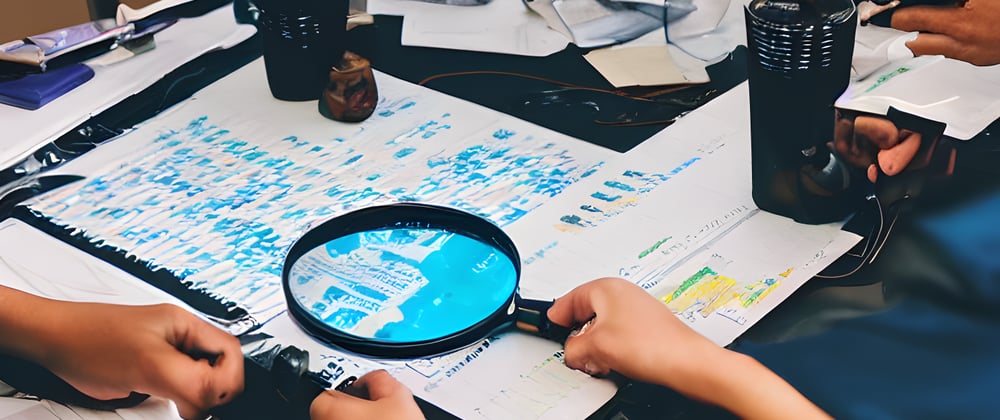





Top comments (0)